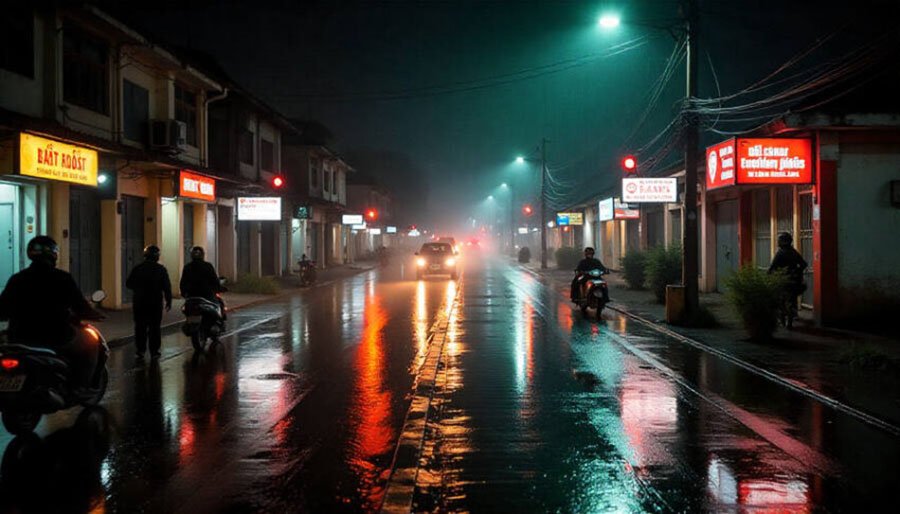читайте также
 Hotel Investment 2025: New Opportunities for the Market — Key Insights from the Cayuga Conference
Hotel Investment 2025: New Opportunities for the Market — Key Insights from the Cayuga Conference
 Vietnam Hit by Record-Breaking Floods: Tourists Advised to Change Their Plans
Vietnam Hit by Record-Breaking Floods: Tourists Advised to Change Their Plans
 WTTC: Travel & Tourism to Create 91 Million New Jobs by 2035 — but a 43 Million Workforce Gap Looms
WTTC: Travel & Tourism to Create 91 Million New Jobs by 2035 — but a 43 Million Workforce Gap Looms
 How Children Receive Residence Permits in Europe: Full 2024 Statistics
How Children Receive Residence Permits in Europe: Full 2024 Statistics
 Cyprus to Introduce Construction Police as Oversight Tightens in 2026
Cyprus to Introduce Construction Police as Oversight Tightens in 2026
 Assets of Russians in the UAE Reach 1 Trillion Rubles: FTS Expands Inspections
Assets of Russians in the UAE Reach 1 Trillion Rubles: FTS Expands Inspections
Philippines Count the Dead: 26 Victims of the Typhoon

Photo: AP
A powerful Typhoon Kalmaegi (Tino) swept across the central Philippines, triggering floods, landslides and widespread destruction. At least 26 people have died, hundreds of thousands have been evacuated, and in some areas people had to be rescued from rooftops, reports the Associated Press.
The Office of Civil Defense (OCD) said most of the victims were residents of Cebu province and other central islands. Torrential waters flooded streets and residential areas, cars were completely submerged, and people had to climb onto rooftops to wait for rescuers. OCD representative Bernardo Rafaelito Alejandro IV said casualty reports were still being updated and that rescue efforts were hampered by power outages and flooded roads.
Red Cross staff in Cebu said they received dozens of calls from residents trapped on rooftops. “It’s impossible to reach everyone right away because of strong currents and floating debris,” said the organization’s secretary general Gwendolyn Pang. She added that cars in some districts were swept away by the floodwaters.
Another tragedy occurred when a Philippine Air Force Super Huey helicopter crashed in Agusan del Sur province while on a humanitarian mission to typhoon-hit areas. Five people were on board, and search operations are still underway. The Eastern Mindanao Command confirmed the crash but did not release details about the possible cause.
In the eastern province of Samar, strong winds tore off roofs and damaged about 300 houses on Homonhon Island. Guiuan Mayor Annaliza Gonzales-Kwan said no casualties were reported and noted that residents acted swiftly and in coordination — the same region was the first to be hit by the devastating Typhoon Haiyan ten years ago.
Before the typhoon’s arrival, authorities evacuated more than 387,000 people from eastern and central provinces. Ferry services were suspended and all small vessels were banned from sailing, leaving over 3,500 passengers and truck drivers stranded at ports. Airlines canceled at least 186 domestic flights.
Kalmaegi became the twentieth tropical cyclone to strike the Philippines this year. As of the latest observation, it was moving over the waters off Guimaras province with sustained winds of 130 km/h and gusts reaching 180 km/h. Forecasters expect the storm’s strength to diminish within the next 24–36 hours as it moves westward, although heavy rains and strong winds will persist longer.
The Philippine Department of Tourism urges travelers to temporarily avoid all sea travel. The coast guard has suspended small vessel navigation, and coastal municipalities restrict boat departures even during brief weather improvements. PAGASA reports storm signals TCWS No. 3-4 in several provinces, with waves rising up to four meters, making even short inter-island routes dangerous.
Weather updates are issued every few hours, and tourists are advised to check advisories twice a day and coordinate their plans with both airlines and port authorities. Even if flights operate on schedule, sea connections can still be disrupted.
Airlines are applying flexible rules: Philippine Airlines and Cebu Pacific offer free rebooking and refunds, but flight decisions are revised throughout the day. The fastest way to change reservations is via personal accounts or airline hotlines. Hotels in affected regions are lowering occupancy and allowing penalty-free rescheduling. Travelers already on resorts are advised to stay in higher buildings away from the coast and confirm backup power and water supplies.





